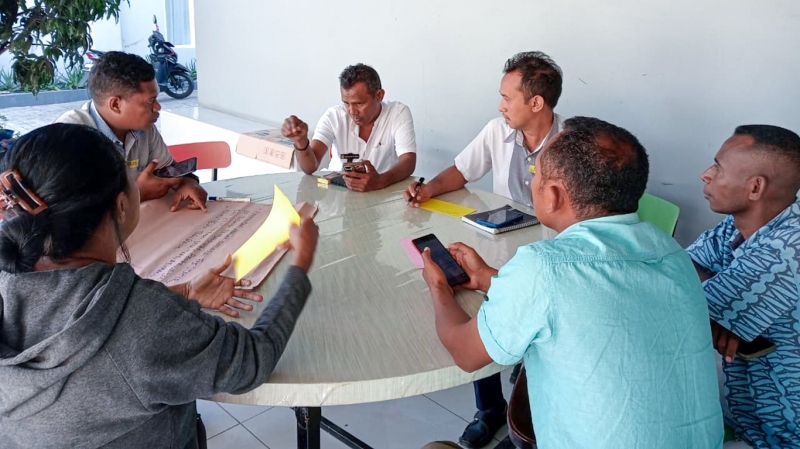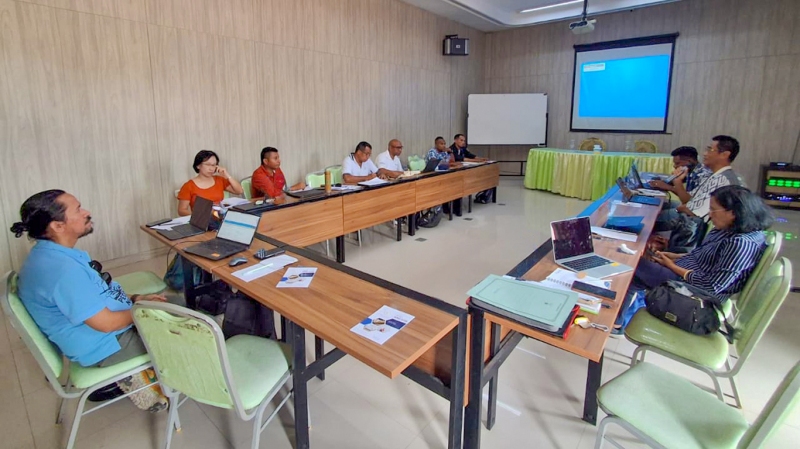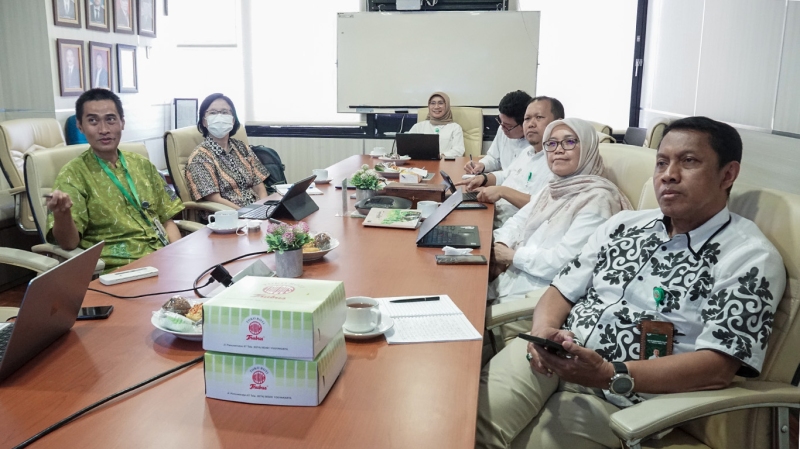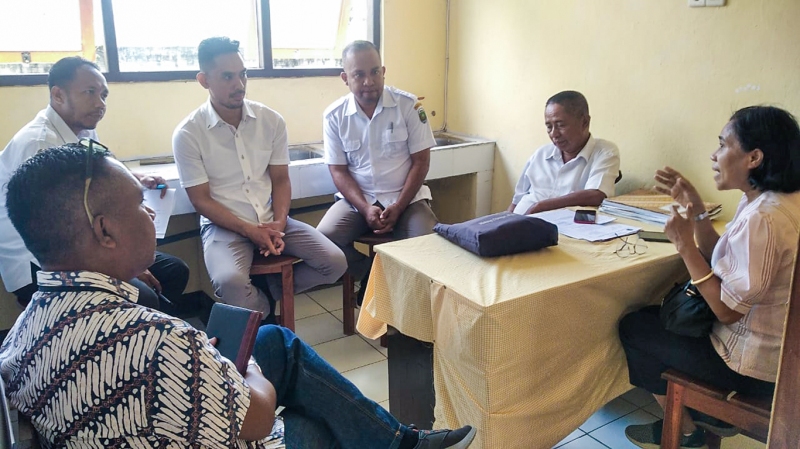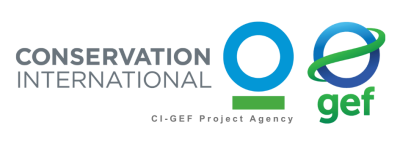Weaving Collaboration from the Center to the Boundary
Stakeholder mapping in the Management of Indonesia–Timor-Leste Transboundary Watersheds (MITLTW) project or now more commonly referred to as the Timor Island Watersheds (TIWA) Project illustrates a wide range of collaborations, from ministries at the national level to communities in border villages. From the mapping process carried out by Inovasi Tangguh Indonesia (InTI), various key actors were identified that play an important role in ensuring that the management of the Talau-Loes and Mota-Masin watersheds can run sustainably through the collaboration of the two countries.
Stakeholders at the National Level: Defining Direction and Mandate
At the national level, the Directorate of Watershed Management Planning and Evaluation of the Directorate General of Watershed Management and Forest Rehabilitation of the Ministry of Forestry of the Republic of Indonesia holds a central role as the main implementing agency of the project, with a strong mandate in the management of transboundary forests and watersheds. Together with the Ministry of Public Works (PU) and the National Border Management Agency (BNPP), the three are categorized as stakeholders with a high level of influence and high interest. These institutions have the authority and resources to determine the policy direction and strategy of project implementation at the national and bilateral levels.
BNPP plays an important role in ensuring that cross-sectoral and inter-regional policies in border areas remain coordinated, while the Ministry of Public Works and Public Works, through its vertical unit of the Nusa Tenggara II River Basin Center (BBWS), and the Directorate General of Watershed Management and Forest Rehabilitation (PDASRH) of the Ministry of Forestry through its vertical unit, the Benain-Noelmina Watershed Management Center (BPDAS), is responsible for technical implementation in the field. These three institutions are also expected to be the main actors in the formation of the Joint Forestry Working Group (JFWG), which is a forum for coordination between the two countries in the management of transboundary watersheds. The term Joint Forestry Working Group over time was proposed to be altered with the Joint Transboundary Working Group (JTWG) so that its programs would not appear to be limited to the "forestry sector" only.
In addition, other institutions such as Bappenas, the Ministry of Home Affairs, the Ministry of Foreign Affairs, and the Coordinating Ministry for Economic Affairs were also identified as strategic partners. Their existence strengthens the synchronization of cross-sectoral policies, diplomacy, and national development directions to be in line with the framework of transboundary environmental cooperation.
Stakeholders at the Provincial and District Levels: Bridging Policies and Actions
At the provincial level of East Nusa Tenggara where the Talau Loes and Mota Masin Transboundary Watersheds are located, institutions such as the East Nusa Tenggara Province Environment and Forestry Service (DLHK), the Regional Development Planning, Research and Innovation Agency (Bapperida), and the NTT Provincial Regional Border Management Agency (BPPD) play an important role as a link between central policies and needs at the community or community level.
Meanwhile, at the district level, Bapperida and BPPD of Malacca Regency and the Regional Research and Development Planning Agency (BP4D) and BPPD of Belu Regency were identified as the main stakeholders who have social and administrative legitimacy in the border area. Both have great potential to be actively involved in the implementation of the Strategic Action Plan (SAP) through Development Program Planning and Border Area Development Action Plans and support institutional coordination between Regional Apparatus Organizations (OPD) in the regions.
Their involvement not only ensures that each policy produced by the project is appropriate to the local context, but also encourages that the results of the program can respond to the real needs of the people living in the transboundary watershed areas of Indonesia and Timor-Leste.
Higher Education Stakeholders and Civil Society Organizations: Guardians of Knowledge and Inclusivity
The mapping also highlights the role of Nusa Cendana University (UNDANA) in Kupang and Pertahanan University (UNHAN) in Atambua as knowledge and research partners that provide scientific and technical support in the implementation of projects. Both have the capacity to conduct ecosystem studies, socio-economic, and community empowerment or community task forces through their study programs related to watershed governance.
Meanwhile, civil society organizations such as the Forum Masyarakat Peduli Sungai (Formapes) of Talau in Atambua and the NGO CIRMA NTT became strategic partners that strengthened the principles of inclusivity and social justice. With long experience assisting communities in the fields of community-based conservation and sustainable agriculture, they are expected to play a role in the advocacy process, capacity building, and community participation in transboundary watersheds management.
Stakeholders at the Village Level: Community as the Main Actor and Guardian of Local Wisdom
At the site level, stakeholders include village governments, traditional leaders, religious leaders, women's groups, youth, farmer groups, field extension workers, and health workers. They are the guardians of the ecosystem balance as well as the owners of local wisdom that is the main capital for sustainable watershed management.
Within the structure of the TIWA project, they will be part of the Community Task Force (GTK), which serves as a liaison between the community and the Joint Working Group (JFWG/JTWG). Their role is crucial to ensure any project policies are truly rooted in community needs and aligned with local wisdom.
Towards Collaborative Transboundary Watershed Governance
The results of the stakeholder mapping analysis show that the success of the MITLTW–TIWA project is highly dependent on the involvement of all parties, from ministries to village communities, in one solid collaborative framework.
This inter-agency and transboundary collaboration is expected not only to strengthen the governance of the Talau-Loes and Mota-Masin transboundary watersheds, but also to build the foundation of long-term cooperation between Indonesia and Timor-Leste based on sustainability, social justice, and livelihoods of communities in the border areas. (InTI)

